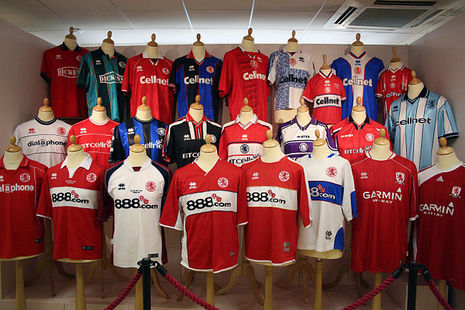Retro football kits: Nostalgic fun or a bitter remembrance?
Jonty Reading argues that bringing back old shirts only serves as a painful reminder of better days

Chelsea’s home shirt for the 23/24 season involves an ad campaign with the slogan “It’s a 90s thing”, bringing Di Matteo and Dennis Wise in for the photoshoot. The kit design is a desperate attempt to relive past glories off the back of a particularly unsuccessful season, yet, ironically, the club is manufacturing nostalgia for an arbitrary period of their history. Similarly, Southampton’s home shirt for the 22/23 season is a homage to their 1986/87 season. This is a great way to celebrate their successful history, except for the fact that the season saw them finish 12th in the league and suffer a third-round exit in the cup.
Modern football shirt culture is a perfect example of the 21st-century nostalgia market. On top of producing an excessive amount of “new” kits each season, clubs have begun to relentlessly produce “throwback” shirts – the production being so excessive that they have no time to solidify themselves as iconic or memorable. This makes the current kit cycle awash with “reflective nostalgia”, with clubs utilising corrupted memory to commodify the de-commodified eras of football. The temporal chaos created by this constant revisiting of the past in many ways affects our ability to criticise the forward march of capitalism within the game.
Most big sides now produce a minimum of three kits every season, rather than sticking to tradition and keeping a kit for at least two years and have a rotation in place for home and away kits. This incessant production has attacked both quality and originality, with these “throwback” kits situating us in a distinctly indistinguishable time.
Perhaps football fans are being kept in a cosy state of nostalgic reverie in order to ensure they are distracted from harsher truths about the increasingly negative aspects of the game. Old football shirts are important; they are a club’s iconography, they represent everything about the era in which they’ve been worn: cheap tickets, drinking in stadiums and safe standing. Yet, they’re also more than this. They’re a connection to the players, clubs formed and owned by people rather than nation-states, the games on terrestrial TV, an era before Sepp Blatter and Abramovich, before Infantino and the Qatar World Cup. Ultimately, they represent the period before European, specifically English, models of football began to treat clubs as businesses with purely profit incentives.
Yet this nostalgia is obviously not a football kit specific phenomenon. Nostalgia invades almost every aspect of our current popular culture, whether it be The Weeknd almost satirically creating an 80s number 1 hit with “Blinding Lights” or Lana Wachowski reluctantly producing The Matrix Resurrections. The football kit is just another aspect of culture invaded by the stasis of organic ideas.
Instead of allowing the stark comparison of the game merely two decades ago to today’s over-sanitised, corporate game, clubs have decided it’s best to rewrite the stories that the kits of days-gone-by have to offer. “The past is now more unpredictable than the future,” writes cultural theorist Svetlana Boym, referring to the dangers of revisionism in the age of capitalism. As we grapple with a game that seemingly slips further out of the control of fans, we now also struggle to position ourselves, or compare our modern game to the past.
 News / Uni Scout and Guide Club affirms trans inclusion 12 December 2025
News / Uni Scout and Guide Club affirms trans inclusion 12 December 2025 News / Pembroke to convert listed office building into accom9 December 2025
News / Pembroke to convert listed office building into accom9 December 2025 News / Cambridge Vet School gets lifeline year to stay accredited28 November 2025
News / Cambridge Vet School gets lifeline year to stay accredited28 November 2025 Features / Searching for community in queer Cambridge10 December 2025
Features / Searching for community in queer Cambridge10 December 2025 News / Uni redundancy consultation ‘falls short of legal duties’, unions say6 December 2025
News / Uni redundancy consultation ‘falls short of legal duties’, unions say6 December 2025










